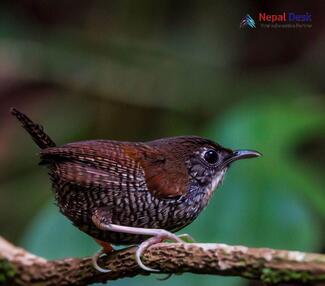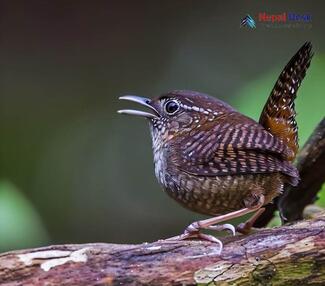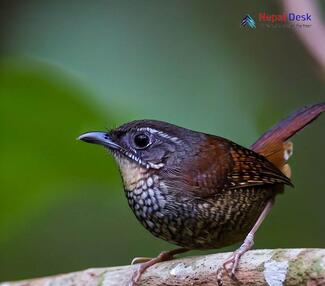The bird-watching community is often captivated by the tiny, elusive Pygmy Cupwing (Pnoepyga pusilla). This charming bird, also known as the Scaly-breasted Wren-babbler or Scaly-breasted Cupwing, might be small in size, but it has captured the hearts of many enthusiasts. In this article, we'll explore all the details about the Pygmy Cupwing and discuss its presence in Nepal, making it a perfect destination for bird lovers.
Physical Characteristics of the Pygmy Cupwing
The Pygmy Cupwing measures merely 8-9 cm in length, making it one of the smallest birds in its family. It possesses a distinct combination of colors and patterns. The upperparts of this tiny bird are prominently brownish while the underparts exhibit a beautiful array of scaly patterns in shades of black and white. Its tail is short, and its rounded wings aid in its characteristic quick flight. The bird's sharp, dark-colored bill is perfect for foraging insects from tree bark or leaf litter.
Natural Habitat and Distribution
The primary habitat of the Pygmy Cupwing ranges from subtropical to tropical montane forests, where they dwell close to the ground or within dense undergrowth areas with plenty of moss-covered rocks and trees. They inhabit parts of Southeast Asia, including Nepal, India, Bhutan, Vietnam, Myanmar, Thailand, and Laos.
In Nepal specifically, this species can be found between elevations of 1220 and 3050 meters above sea level. Some popular spots to witness these birds include Shivapuri Nagarjun National Park and Langtang National Park.
Dietary Preferences, Breeding & Nesting Habits
As insectivores, Pygmy Cupwings primarily feed on insects such as beetles, ants, and spiders, as well as occasional small snails. They are adept at foraging in the undergrowth while remaining well hidden from potential predators.
The breeding season for the Pygmy Cupwing typically occurs between March and August, with some regional variations. During this period, these birds construct dome-shaped nests made of dry leaves and grasses. These intricate nests are often found near water sources or well-concealed between rocks or in bushes. Female Pygmy Cupwings lay 1-4 white eggs, which are incubated for about two weeks before hatching.
Birdwatching Opportunities in Nepal
Nepal is an ideal destination for bird enthusiasts due to its diverse landscape and rich avifauna, including the enigmatic Pygmy Cupwing. The best time to spot this elusive bird is during the early mornings as the forest comes to life with bird songs. Hiring a local bird-watching guide would greatly enhance your chances of finding and observing this charismatic species.
In conclusion, the Pygmy Cupwing remains one of the most alluring species for birdwatchers in Nepal and beyond. Its captivating appearance, well-adapted habitat use, and elusive nature make it a must-see for any wildlife enthusiast visiting the region. Whether you're an experienced birder or just starting out, keeping an eye out for the enchanting Pygmy Cupwing (Pnoepyga pusilla) is sure to provide an unforgettable experience.




